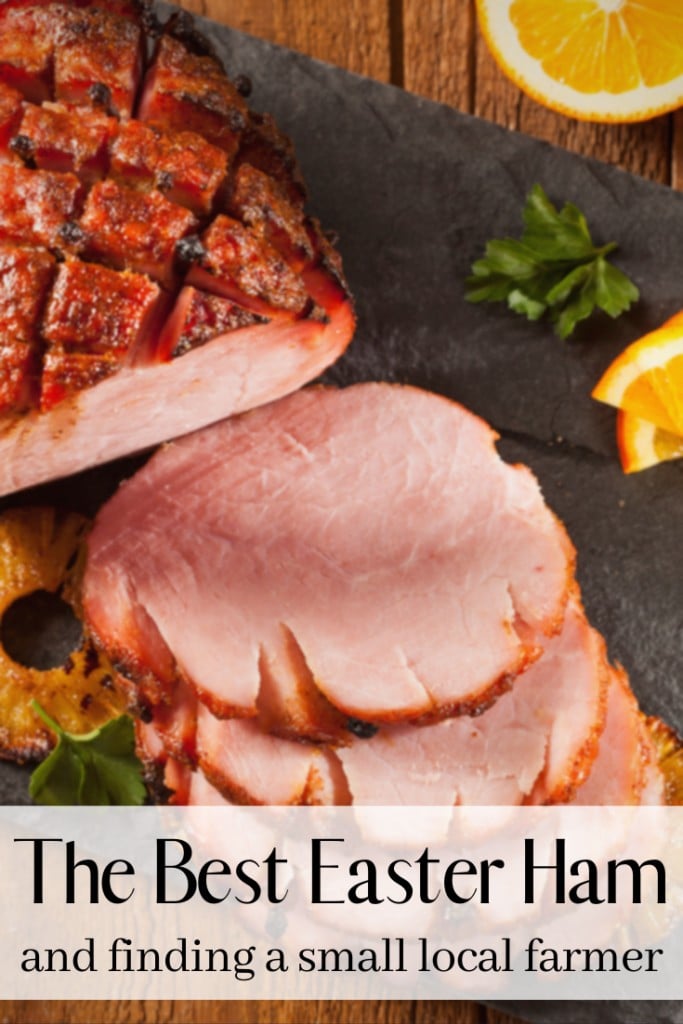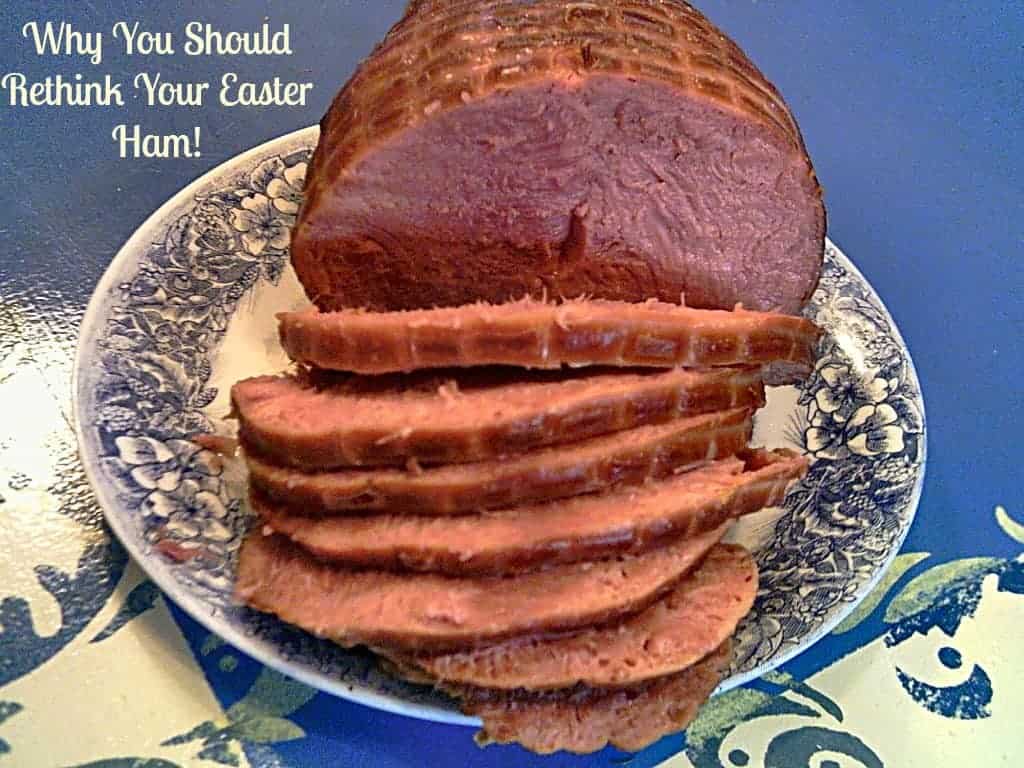Easter is coming soon. I am really looking forward to cooking and spending time with my family. Ham is the traditional Easter food here in the US. Back in the olden days, pigs were slaughtered in the fall. Since there was no refrigeration, the pork that wasn’t eaten during the winter was cured for spring. This curing process took a long time and the first hams were ready right around Easter. This made ham a natural choice for Easter dinner. Many people are heading out this weekend and picking up an Easter ham for their fancy dinner but they may want to rethink that decision.
Posts feature partner companies & may be sponsored. Post contains affiliate links & I will be compensated if you make a purchase after clicking on links. As an Amazon Associate I earn from qualifying purchases.
Rethink Your Easter Ham
(PLEASE NOTE: these are the facts I have found on Wikipedia and PETA as of 2012. These statistics may have changed since this article was written)
- Pregnant sows are confined to 7 ft gestation crates, where they spend most of their lives. Eventually, the animal gets so big that it cannot even turn around anymore. Smithfield has suggested that they are planning on doing away with this practice as of 2017 but there has also been indication that they are backpeddling on this issue.
- Piglets weaned at about three weeks old and moved without the sow to the “nursery”. They are housed in groups of about 15 in large stalls with wire mesh floors.
- The animals reach 250–280 pounds by the age of 25 weeks, packed into trucks without food and water and delivered to a slaughterhouse.
- Millions of gallons of untreated fecal matter is produced and stored in the lagoons at these pig production facilities. There have been numerous health complaints and fines regarding this waste and people have actually died from falling in them accidentally.
✯Don’t want to miss the next post?✯ Follow Turning the Clock Back on Facebook | Twitter | Pinterest Or join the private Facebook group for simple tips on going green!
More About Smithfield Hams

Finding Humanely Raised Pork Products

Diane is a professional blogger and nationally certified pharmacy technician at Good Pill Pharmacy. She earned her BS in Microbiology at the University of New Hampshire and has worked in cancer research, academics, and biotechnology. Concern over the growing incidence of human disease and the birth of her children led her to begin living a more natural life. She quickly realized that the information she was learning along the way could be beneficial to many others and started blogging and freelance writing to share this knowledge with others. Learn more about her HERE.


Definitely a great reason to buy local. We have purchased a half a pig from a local farmer and I’m so glad that we have that option.